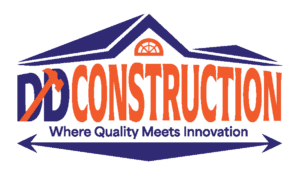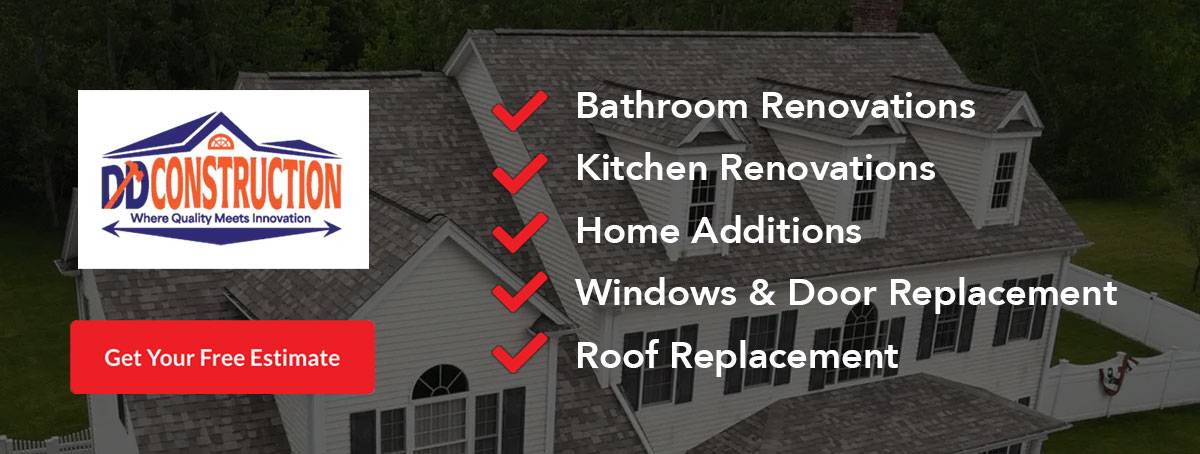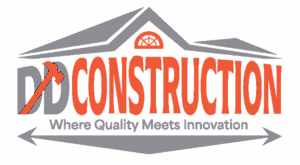Signs You Need a Roof Inspection by a Massachusetts Roofing Expert
The integrity of a roof is fundamental to the safety and value of any home, particularly in Massachusetts where seasonal weather extremes can rapidly deteriorate roofing materials. In many cases, local expertise such as dd construction ma can be invaluable in assessing damage before it compromises structural stability. Homeowners often overlook subtle indications of damage that gradually compromise a home’s structural stability. Whether due to storm-induced wear or long-term exposure to harsh weather, identifying warning signs early can save on costly repairs later. This article provides a comprehensive guide to recognizing common roofing problems, understanding how the unique Massachusetts climate accelerates roof damage, and knowing when and why a professional inspection is necessary.
In Massachusetts, heavy snow, rain, strong winds, and occasional hail create multiple points of vulnerability in roofing systems. Homeowners must be aware of indicators such as water leaks, missing shingles, granule loss, sagging roof decks, and damaged gutters that require immediate attention. Ignoring these symptoms may lead to structural degradation, interior water damage, and increased repair costs.
This guide empowers homeowners with knowledge on the most common signs that indicate a roof inspection is needed. It also highlights how local weather further impacts roofs, the components of a thorough inspection by a qualified Massachusetts expert, and how to choose the right roofing contractor to ensure quality service. Through careful observation, timely inspections, and proper maintenance, homeowners can protect their investments and ensure their roofs continue to provide security and efficiency over the long term. By understanding these warning signs and how to address them, residents in Massachusetts can avoid expensive damages and preserve the long-term value of their property.
Let’s explore in detail the various signs and factors that necessitate a roof inspection, along with the crucial considerations for homeowners.
What Are the Most Common Signs You Need a Roof Inspection?
A solid roof is not only a protective barrier but also a complex assembly that can show early signs of wear and tear. Recognizing these warning indications is crucial for preventing minor issues from becoming major problems. In Massachusetts, where weather variations present constant challenges, awareness of the common signs that demand a roof inspection is vital.
How Do Water Leaks Indicate Roof Damage?
Water leaks are often the first sign that the roof may be compromised. When water infiltrates a roof, it indicates that the waterproof barrier has been breached. Moisture can enter through worn-out flashing, deteriorated seals around chimneys, or damaged shingles. The first noticeable sign is usually damp spots or discoloration on the ceiling or walls. Over time, leaks can deteriorate underlying structural materials, cause mold growth, and compromise wooden support structures in the attic.
A small leak can expand significantly if left unchecked. Homeowners should be vigilant about any unexplained moisture in the attic or ceiling, especially after heavy rain or snow melt. Moisture trapped within the roofing system can lead to corrosion of metal components and weaken the roof’s overall integrity. Regular inspections allow early detection of these issues and can prevent extensive interior damage. Evidence suggests that early repair of water intrusion can reduce overall repair costs by as much as 40%. Adequate insulation and proper ventilation also help minimize water leaks by reducing condensation buildup.
Why Are Missing or Damaged Shingles a Warning Sign?
Missing or damaged shingles are among the most visible signs that a roof may be deteriorating. Shingles act as the first defense against the elements. When they are cracked, curled, or missing, the protective layer is compromised, leaving the roof deck exposed to water infiltration, wind damage, and debris. In Massachusetts, where high winds and ice can be particularly destructive, even minor shingle damage can quickly escalate.
The loss of shingles not only diminishes a property’s aesthetic appeal but also reduces the roof’s overall structural integrity. Spaces left by missing shingles allow moisture to seep into the decking and insulation, accelerating rot and decay and potentially leading to costly repairs. Homeowners should inspect their roofs after major storms and replace any missing or damaged shingles promptly. Studies indicate that replacing damaged shingles can extend roof life by up to 30%, underscoring the importance of prompt preventive measures.
What Does Granule Loss on Shingles Mean for Your Roof?
Granule loss on shingles is another significant indicator of roof damage. Shingles are embedded with granules that protect them from UV rays and enhance fire resistance. When these granules dislodge, it signals that the shingles are aging or suffering from deterioration. Granule loss is common in older roofs or those exposed to severe weather, such as the heavy rains and high winds experienced in Massachusetts.
Without sufficient granules, shingles lose their ability to shield the underlying material from UV radiation, accelerating aging. This can lead to brittleness and an increased risk of cracking under stress. The presence of granules in gutters often indicates that the shingle’s integrity is compromised, meaning the roof may be nearing significant problems. Homeowners noticing excessive granule build-up on downspouts should schedule a professional inspection to determine if repair or replacement is needed. Regular maintenance combined with timely inspection can slow overall roof degradation.
How Can a Sagging Roof Deck Signal Structural Problems?
A sagging roof deck often implies underlying structural issues that are more serious than superficial shingle damage. When the roof deck—the supportive layer beneath the roofing material—begins to sag, it indicates the load-bearing structure may be failing. This can result from prolonged water intrusion, pest damage, or age-related deterioration of wooden support beams.
A sagging deck is a serious red flag because it not only threatens home safety but also accelerates the deterioration of the roof’s exterior components. When the deck dips, it disrupts proper water drainage and can lead to water pooling. Such conditions further stress the roof’s materials and may lead to partial or complete roof collapse. Homeowners should be alert for sagging or uneven surfaces in their roofing and seek professional evaluation immediately. Early intervention—such as reinforcing or replacing damaged sections—can be cost-effective in preventing more significant structural repairs.
Why Should Damaged Gutters and Downspouts Prompt an Inspection?
Damaged gutters and downspouts are often overlooked yet play a critical role in roof health. They are designed to direct water away from the roof and foundation. When they malfunction or clog, water can back up and run over the roof edge, seeping under shingles and into the roof deck. This uncontrolled water flow can lead to severe damage, including rot, mold, and the deterioration of both roofing and structural elements.
In Massachusetts, where heavy rainstorms and rapid snowmelt are common, proper functioning of gutters and downspouts is essential. If these systems fail, the roof and foundation may be compromised. Regular cleaning and maintenance, along with inspections for rust, separation, or clogging, are pivotal steps to protect the roofing system. Professional roofing companies recommend thorough inspections include examination of these drainage systems to ensure they are intact and working as intended.
How Does Massachusetts Weather Affect Roof Damage and Inspection Needs?
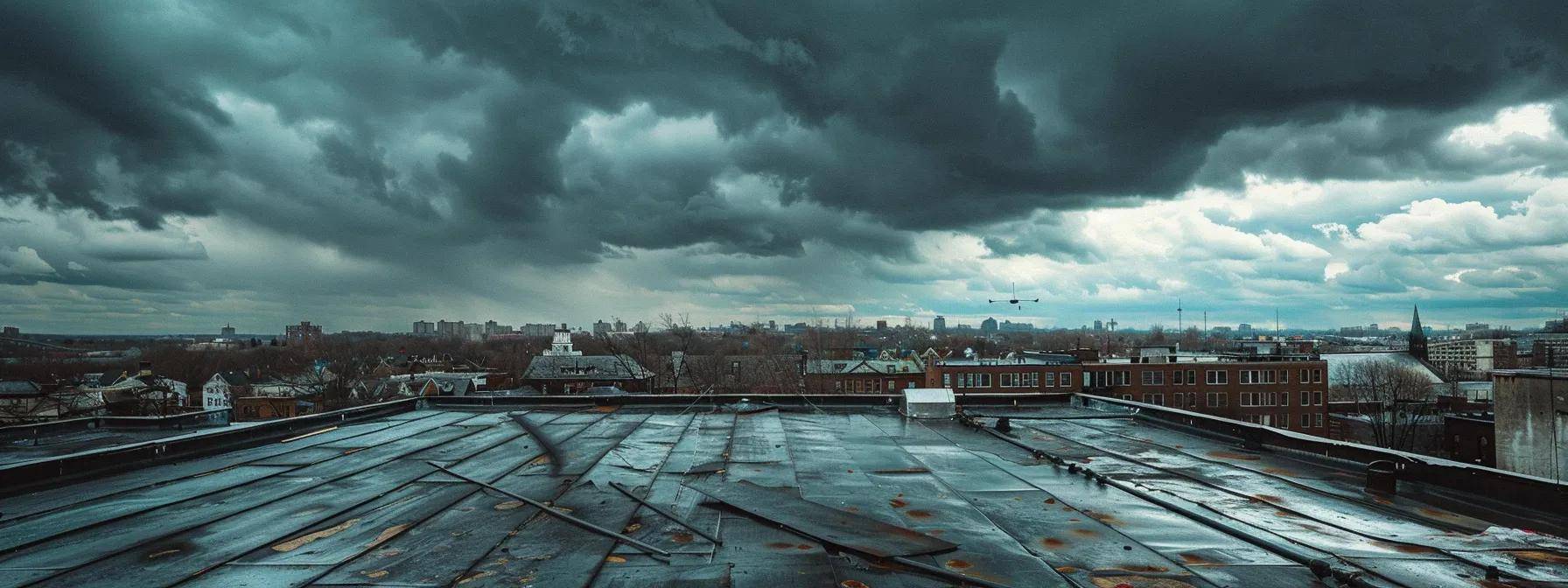
Massachusetts experiences a diverse range of weather conditions that impact a roof’s lifespan and performance. The region’s climate is characterized by heavy snowfall in winter, pounding rain in spring, and strong winds and occasional hail in transitional seasons. Such dramatic fluctuations require more frequent and detailed roof inspections to mitigate weather-related damage.
What Roof Damage Does Hail Cause in Massachusetts?
Hailstorms are common in Massachusetts, particularly during spring and summer. Hail can cause immediate and visible damage to a roof’s surface by denting, cracking, or even breaking shingles. The affected area may show chipped granules that normally protect shingles from UV rays. In severe instances, hail can create craters or cause shingle loss across large sections of the roof, compromising its water-resistant qualities. Homeowners should inspect roofs after every major hailstorm to check for impact damage. A professional inspection can determine whether minor repairs are sufficient or if larger roof sections need replacement. Regular maintenance and prompt repairs extend roof life and prevent extensive deterioration.
How Does Wind Damage Impact Roof Integrity?
Wind damage is another common cause of roof deterioration in Massachusetts. Strong winds can peel away loose shingles, lift roofing materials, and even cause significant structural damage if the pressure is high. Wind lifting shingles or dislodging siding not only exposes the underlying deck to moisture but also creates a pathway for debris to inflict additional damage. In extreme cases, high-velocity winds can remove a roof entirely, risking occupants and compromising home integrity. Wind damage often appears as curled or missing shingles and may compromise flashing around vulnerable areas such as chimneys and skylights. Regular inspections after high-wind events help ensure all components are securely fastened and reduce the risk of minor issues developing into catastrophic failures.
Why Are Ice Dams a Frequent Problem in Massachusetts Roofs?
Ice dams pose a significant risk in colder parts of Massachusetts, where freezing temperatures can affect home environments for extended periods. An ice dam forms when melting snow refreezes at the roof eaves, creating a barrier that prevents proper drainage. The resulting backed-up water then seeps under the shingles, causing damage to both roofing materials and interior structures. Ice dams are particularly problematic because they often remain unnoticed until damage is severe and repair costs are high. Homeowners may notice water stains on ceilings, peeling paint, or pooling water in the attic. Prevention methods include improving attic insulation, ensuring proper ventilation, and installing heat cables along the roof edge. Regular winter inspections are crucial to identify and address early signs of ice dam formation.
How Do Nor’easters and Storms Increase Roof Inspection Urgency?
Nor’easters, with their powerful winds, heavy rains, and heavy snow, are common in Massachusetts during autumn and winter. These storms place enormous pressure on roofing systems, often causing damage that is not immediately visible. The combination of high winds, heavy rainfall, and snow accumulation strains all roofing components—from shingles and flashing to gutters and roof decks. Even if structural damage is not apparent, microfractures and loosened materials can compromise the roof’s integrity. Homeowners should schedule immediate inspections after a nor’easter to identify and repair issues before they worsen. A professional assessment can determine if the storm damage is superficial or if deeper structural elements have been affected.
When Should You Schedule a Roof Inspection in Massachusetts?
Roof inspections should be scheduled regularly, with additional urgency following unpredictable weather events. Timing is crucial to ensure potential issues are identified before escalating into costly repairs. In Massachusetts, where seasonal changes rapidly affect roofing materials, homeowners must be proactive in scheduling inspections to protect their investment.
How Often Should Massachusetts Homeowners Get Roof Inspections?
It is generally recommended that Massachusetts homeowners have roof inspections at least once a year. However, due to harsh winters, heavy snowfall, and stormy weather, a biannual schedule might be more appropriate. Regular inspections help catch early signs of wear, such as cracked shingles, water leaks, or granule loss, before major issues develop. Homeowners should consider additional inspections after extreme weather events, particularly after heavy snowstorms or severe rain. Inspections immediately post-storm can reveal damage that might not be visible from the ground, such as hidden leaks or snow load–related damage. Frequent inspections extend the roof’s life and serve as a cost-saving measure by preventing larger problems.
What Are the Signs After a Storm That Require Immediate Inspection?
After a storm, several critical signs suggest that an immediate roof inspection is necessary. These include visible water stains on ceilings, signs of shingle displacement or missing shingles, granule deposits in gutters, and any unusual sagging of the roof deck. Additionally, discoloration on exterior walls or trees leaning toward the structure may signal storm-related roof issues. Homeowners should monitor even minor changes and schedule an expert inspection if abnormalities are detected. A prompt post-storm assessment can isolate concerns and recommend timely repairs to prevent future risks.
How Can Pre-Purchase Roof Inspections Protect Buyers?
A pre-purchase roof inspection is essential for buyers investing in a home in Massachusetts. This inspection goes beyond a basic visual assessment by providing a detailed report on the roof’s condition, including potential issues that could lead to expensive repairs. By identifying problems such as granule loss, water leaks, or structural weaknesses before closing the sale, buyers can negotiate a better purchase price or have repairs completed prior to moving in. Understanding the roof’s health is crucial for long-term financial planning, as roofing expenses can significantly impact budgeting. A thorough pre-purchase inspection offers peace of mind and directly influences the overall investment decision by exposing hidden risks.
When Is It Time to Inspect Commercial Roofs in Massachusetts?
Commercial roofs endure even greater wear and tear due to their larger surface areas and heavier foot traffic. In Massachusetts, commercial property owners should schedule inspections at least twice a year, and more frequently following major weather events. Given the importance of uninterrupted business operations, proactive inspections help ensure that issues are resolved before they affect operations. Commercial roof inspections assess roofing materials such as membrane integrity, flashings, and sealants, and also examine components critical for energy efficiency, such as insulation and rooftop equipment. Detailed inspection reports often include recommendations for preventive maintenance and repair priorities to keep business operations running smoothly.
What Does a Professional Roof Inspection by a Massachusetts Expert Include?
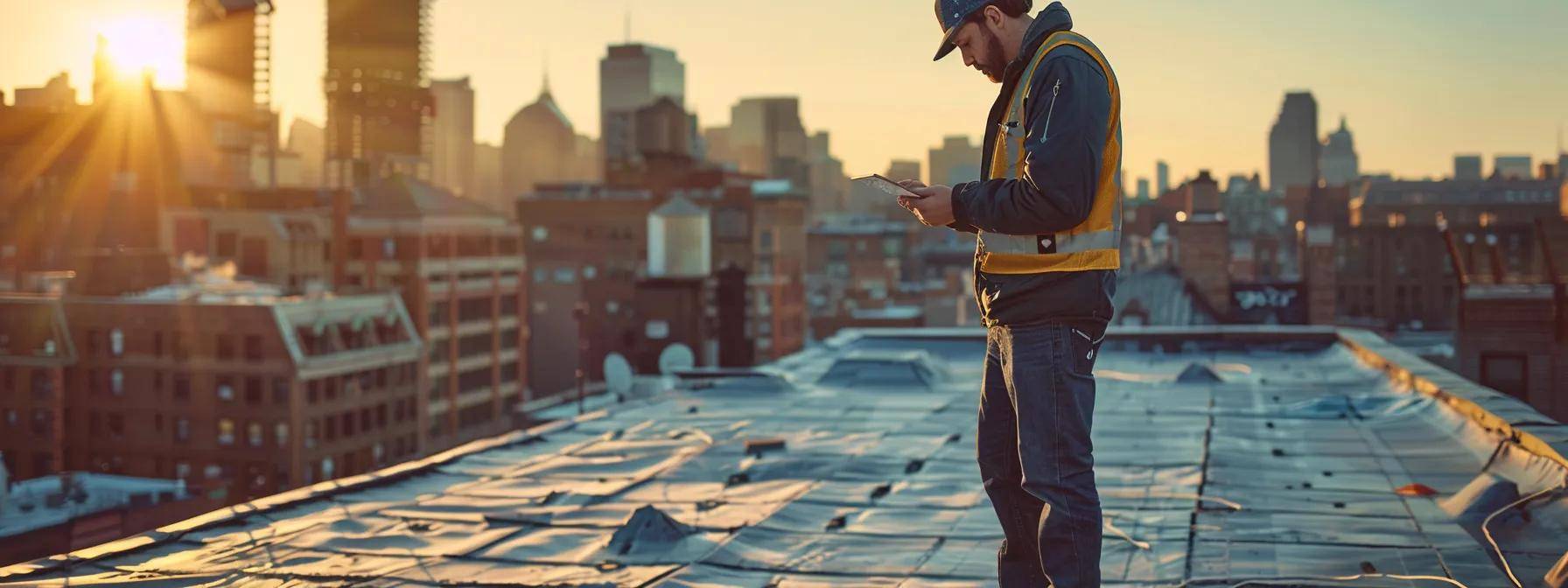
A professional roof inspection by an experienced Massachusetts roofing expert offers an exhaustive evaluation of every part of the roof system. This detailed process identifies and addresses potential vulnerabilities, protecting homeowners from hidden issues that could escalate into costly repairs and significantly reduce the roof’s lifespan.
How Is the Roof Surface Visually Inspected?
During a professional inspection, the roof surface undergoes a detailed visual examination. The process begins with an assessment of the shingles’ overall condition, granule integrity, and any overt signs of damage such as cracking, curling, or missing components. Experts check for discoloration, irregular patterns, or distortions that might indicate structural issues. They also closely examine flashings, seals, and the venting system, as these areas are common sources of water infiltration. Inspectors use both aerial tools and on-ground evaluations, often combining high-resolution photography with specialized equipment to enhance accuracy. This initial assessment forms the foundation of a detailed inspection report that guides any necessary repairs or maintenance actions.
Why Is Attic and Interior Inspection Important?
In addition to the roof’s exterior, a professional inspection also involves evaluating the attic and interior spaces. Damage on the roof often affects a home’s interior; inspectors look for water staining, mold growth, or warped insulation that indicates moisture penetration from a compromised roof. Assessing the attic’s ventilation and insulation quality is critical in preventing condensation and mitigating thermal shock effects on roofing materials. This dual approach ensures that small issues are corrected before they evolve into significant problems, providing homeowners with peace of mind regarding both shelter and structural integrity.
How Are Gutters and Downspouts Evaluated?
Gutters and downspouts are integral to a roofing system’s performance. During an inspection, experts examine these components to ensure they are securely attached, free of damage, and effectively channel water away from the home’s foundation. Inspectors check for proper pitch, secure fastenings, and any signs of rust or physical damage, and verify that downspouts direct water far enough away to reduce the risk of erosion or basement flooding. This evaluation highlights the overall health of the roof and underscores the need for regular maintenance and timely repairs of these external fixtures.
What Does a Detailed Roof Inspection Report Contain?
The culmination of a professional inspection is a comprehensive report detailing all findings and recommendations. This report typically includes an overview of the roof’s current condition, photographic evidence of any damage, and an itemized list of immediate repairs and future maintenance recommendations. It may cover shingle performance, granule loss, water penetration risks, compromised structural elements, and the condition of gutters and downspouts. The report also outlines potential costs, prioritized action items, and suggested repair timelines. By providing quantifiable data and expert insights, the report assists homeowners in decision-making and serves as documentation for insurance or pre-sale disclosures.
How Can You Choose the Right Massachusetts Roofing Contractor for Your Inspection?
Choosing a reliable and experienced roofing contractor is critical to ensuring high-quality inspections and subsequent repairs. The long-term success of a roofing maintenance strategy depends on the integrity of the roofing system and the contractor’s skill and reputation. In Massachusetts, where weather challenges are constant, selecting the right professional to assess and address roofing issues is paramount for both safety and investment protection.
What Licensing and Insurance Should a Roofing Contractor Have?
A competent roofing contractor must hold the appropriate licenses and insurance to protect both workers and homeowners. In Massachusetts, certified contractors are required to have a valid home improvement contractor license along with liability and worker’s compensation insurance. These credentials indicate adherence to industry standards and state regulations. Homeowners should request proof of these documents to ensure that all work is performed safely and to a high standard.
Why Is Local Experience Important for Massachusetts Roof Inspections?
Local experience significantly affects a contractor’s ability to navigate the challenges posed by Massachusetts weather. Contractors familiar with the local climate understand the impacts of heavy snow, ice dams, and nor’easters and can recommend appropriate materials and maintenance practices. Their proven track record with local building codes ensures more accurate diagnoses and effective, durable repair solutions.
How Do Customer Reviews and Testimonials Help in Choosing a Contractor?
Customer reviews and testimonials provide insights into a roofing contractor’s past performance and reliability. Positive feedback from previous clients is a strong indicator of quality workmanship, professionalism, and adherence to deadlines. In Massachusetts, where weather-related challenges are prevalent, reviews often reveal how effectively a contractor has handled similar issues. Detailed testimonials and case studies help validate a contractor’s claims and ensure a transparent, trustworthy engagement.
What Warranties and Guarantees Should You Expect?
A professional roofing contractor should offer comprehensive warranties and guarantees covering both workmanship and material quality. In Massachusetts, reputable contractors typically provide a workmanship warranty lasting several years, along with manufacturer warranties for materials such as shingles, membranes, and flashing. These warranties offer financial protection, ensuring that repairs will last and reducing unexpected future costs. Homeowners should review warranty terms carefully before finalizing any contract.
What Are the Potential Consequences of Ignoring Roof Damage Signs?
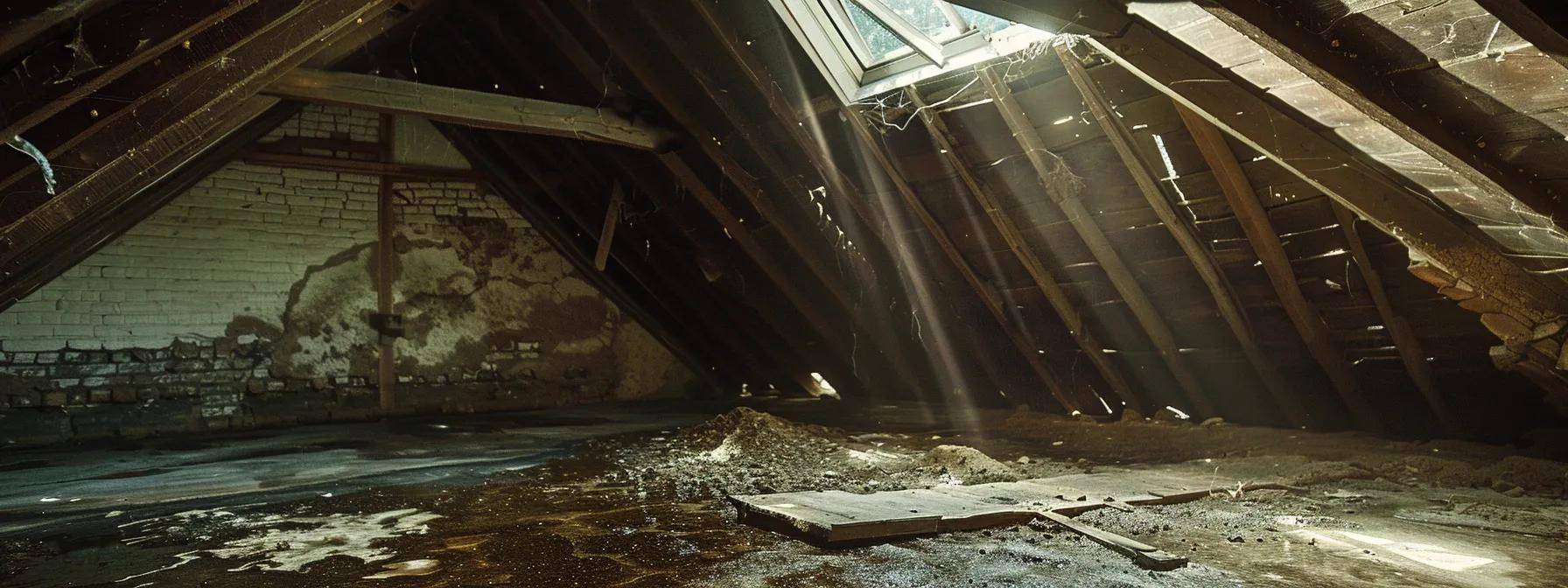
Ignoring warning signs of roof damage can lead to severe consequences that extend far beyond initial superficial issues. Overlooking early signs such as water leaks, missing shingles, and ice dams can allow small problems to develop into larger, more expensive failures. The cumulative effects of such damage compromise both the roof’s structural integrity and the overall safety and value of the home.
How Can Water Leaks Lead to Structural Damage?
Persistent water leaks compromise the structural framework of a roof and the home beneath it. Continuous exposure to moisture weakens wooden beams and accelerates the decay of structural elements. When water infiltrates the attic and ceiling, it can promote mold and mildew growth, adversely affecting insulation and indoor air quality. Over time, these leaks can cause significant sagging of the roof deck, reduce the effectiveness of load-bearing components, and ultimately threaten the home’s stability. Addressing water leakage promptly can prevent extensive, costly repairs and mitigate associated health hazards.
Why Does Ignoring Missing Shingles Increase Repair Costs?
Missing shingles create a direct pathway for water, debris, and other elements to reach the roof deck. Without timely repair, this vulnerability accelerates wear on all roof layers. Water infiltration into these exposed areas can lead to further shingle deterioration and expand damage, eventually necessitating a complete roof replacement rather than simple repairs. The cost difference between patching isolated areas and a comprehensive roof overhaul can be significant, making prompt repair essential to maintaining roof integrity.
How Do Ice Dams Cause Interior Damage and Mold?
Ice dams form along roof eaves when melting snow refreezes, preventing proper water runoff. The backed-up water seeps under the shingles and into the underlying structure, leading to internal damage. Persistent moisture creates an ideal environment for mold and mildew, which not only causes unsightly stains and odors but also poses health risks to occupants. The hidden nature of ice dam damage means that significant deterioration may occur before visible signs become apparent. Timely maintenance and improved insulation can help prevent these issues.
What Risks Do Damaged Gutters Pose to Your Home?
Damaged or malfunctioning gutters can significantly affect roof performance. Inefficient gutters may cause water to overflow and run down exterior walls, potentially infiltrating the home’s foundation and interior spaces. This uncontrolled water flow can lead to structural damage, basement flooding, and property erosion, resulting in higher repair costs. Additionally, clogged or broken gutters worsen ice dam formation by preventing efficient water flow. Given these risks, damaged gutters should be prioritized for inspection and repair.
How Much Does a Roof Inspection Cost in Massachusetts and What Affects Pricing?
The cost of a roof inspection in Massachusetts varies widely based on several factors, including the size and complexity of the roofing system, the severity of potential damage, and regional market rates. While the price may seem like an added expense, investing in a professional roof inspection is a proactive measure that can prevent larger, costlier repairs in the future.
What Factors Influence Roof Inspection Prices?
Key factors that determine the cost of a roof inspection include the size and architectural complexity of the roof—larger roofs or those with multiple angles and steep slopes require more time and specialized equipment. The age and current condition of the roof can increase costs if it requires a more thorough inspection. Geographic location also influences pricing, with urban areas like Boston often charging premium rates compared to rural parts of Massachusetts. The type of roofing material (asphalt shingles, slate, metal, etc.) and accessibility issues, such as nearby trees or obstructing structures, further affect inspection costs. Professional inspectors may also include travel fees and charge for detailed report generation.
What Is the Average Cost of a Roof Inspection in Massachusetts?
On average, roof inspections in Massachusetts range from approximately $200 to $500 for residential properties. For larger or more complex roofs, particularly in commercial buildings, the cost may escalate to between $500 and $1000. It is advisable for homeowners to obtain multiple quotes to ensure a fair price for a comprehensive service. Some roofing companies integrate inspection pricing with repair quotes, which can be beneficial when addressing known issues concurrently. Overall, a complete roof inspection can potentially save thousands of dollars in future repair costs.
Why Is Investing in a Professional Inspection Worth the Cost?
A professional roof inspection offers significant long-term savings and peace of mind. A thorough inspection can uncover hidden issues, such as minor water leaks, shingle damage, and gutter malfunctions, that may lead to expensive repairs or full roof replacements if left unaddressed. Detailed reports from certified inspectors provide a clear roadmap for prioritizing maintenance and repairs while protecting the home’s structural integrity. Additionally, regular inspections can enhance a home’s resale value and may even be incentivized by some insurance companies.
Summary Table of Roof Inspection Pricing Factors
| Factor | Description | Impact on Cost |
|---|---|---|
| Roof Size | Larger roofs require more time and resources | Higher cost |
| Architectural Complexity | Multiple angles and steep slopes increase inspection difficulty | Higher cost |
| Material Type | Specialized materials may require expert evaluation | Varies by material |
| Age and Condition | Older, damaged roofs need more detailed scrutiny | Potentially higher cost |
| Geographic Location | Urban areas may have higher service fees | Urban > Rural |
| Accessibility and Safety | Obstructed roofs may need specialized equipment | Increased labor cost |
| Report Detail | Comprehensive reports require additional time to generate | Moderate to high impact |
This table summarizes the key variables that influence the cost of a professional roof inspection, ensuring homeowners understand the expense breakdown.
Frequently Asked Questions
Q: How often should I get my roof inspected in Massachusetts? A: Homeowners in Massachusetts should have their roof inspected at least once a year, with additional inspections after severe events such as hailstorms, nor’easters, or heavy snowfalls. Regular inspections help identify minor issues before they escalate.
Q: What are the most common signs that my roof needs an inspection? A: Common warning signs include water leaks, missing or damaged shingles, granule loss on shingles, sagging roof decks, and damaged gutters. These signs often indicate water infiltration, structural stress, and overall wear.
Q: How much does a typical roof inspection cost in Massachusetts? A: Roof inspections generally range from $200 to $500 for residential properties, with more complex roofs costing up to $1000. Factors such as roof size, design complexity, material type, and location influence the cost.
Q: Can I perform a roof inspection myself? A: While homeowners can visually inspect their roofs for obvious damage, professional inspections are recommended as experts use specialized tools and techniques to identify subtle issues. Professionals provide detailed reports and recommendations essential for ensuring quality repairs.
Q: Why is it important to address gutter damage along with roof inspections? A: Gutters and downspouts are critical in managing water flow off the roof. Damaged or clogged gutters can lead to water pooling, ice dam formation, and structural damage to the roof deck and foundation. Proper maintenance of these elements is essential for preventing secondary damage.
